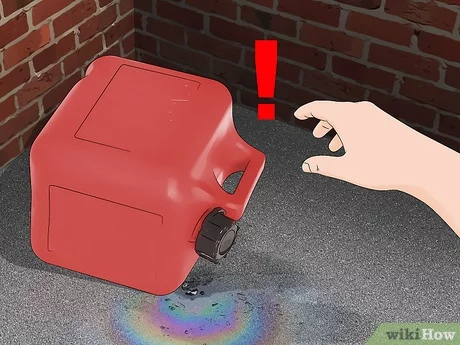How to Clean Up Gasoline: 11 Steps

Introduction:
Gasoline spills are not only a messy situation, but they can also be hazardous if not dealt with promptly and efficiently. This article will walk you through 11 steps to clean up gasoline spills safely and effectively.
Step 1: Put on protective gear
To protect yourself from coming into direct contact with gasoline, put on gloves, goggles, and a mask. Ensure that the gloves are chemical-resistant to avoid any damage from the gasoline.
Step 2: Assess the extent of the spill
Determine the size of the gasoline spill so you can create a plan of action. Smaller spills can be easily managed, while larger spills might need professional help.
Step 3: Ventilate the area
If the spill occurred in an enclosed space, open doors and windows to let fresh air in. Gasoline fumes are toxic and flammable; proper ventilation helps reduce these risks.
Step 4: Use a gas absorbent material or clay cat litter
Sprinkle an absorbent material like clay cat litter or dry sand over the spilled gasoline. This will help soak up the liquid and reduce fumes. Leave it on for at least 30 minutes to allow adequate absorption.
Step 5: Collect the soaked-up material
Once the absorbent material has soaked up the gasoline, use a non-sparking shovel or broom to collect it into a sealable plastic bag or container.
Step 6: Dispose of contaminated materials safely
Dispose of the sealed bags or containers according to your local waste disposal regulations. You may need to contact your local hazardous waste disposal center for further instructions.
Step 7: Clean up any remaining residue
Apply a paste made from water and baking soda to any spots where gasoline remains. Scrub this into the area using a brush, and then rinse with water.
Step 8: Dry the area
Allow the cleaned area to air dry or use a fan to speed up the drying process. Keep the area well-ventilated to prevent any fumes from lingering.
Step 9: Check nearby objects for gasoline
Inspect surrounding objects and areas for any additional gasoline spills or residue. If you find any, repeat steps 4 to 8 as needed.
Step 10: Inspect for gasoline odors
After everything is cleaned up, check for any lingering gasoline odors. If you still smell gasoline, repeat the cleaning process using a different absorbent material or contact a professional cleaner for help.
Step 11: Prevent future spills
Take preventive measures like ensuring proper storage of gasoline in approved containers and avoiding overfilling fuel tanks.
Conclusion:
Cleaning up gasoline spills is essential in maintaining a safe environment. By following these 11 steps, you can eliminate the risks associated with gasoline spills and ensure your safety at home or in your workplace.






